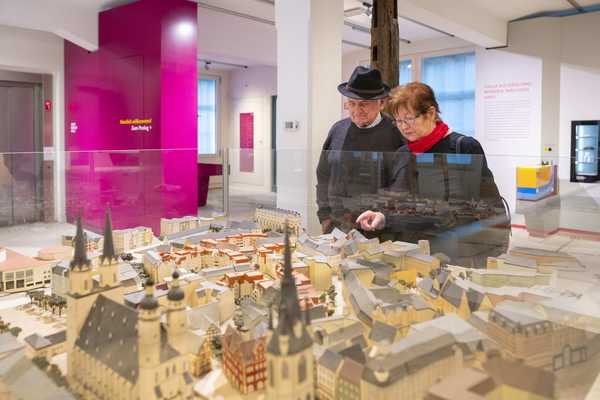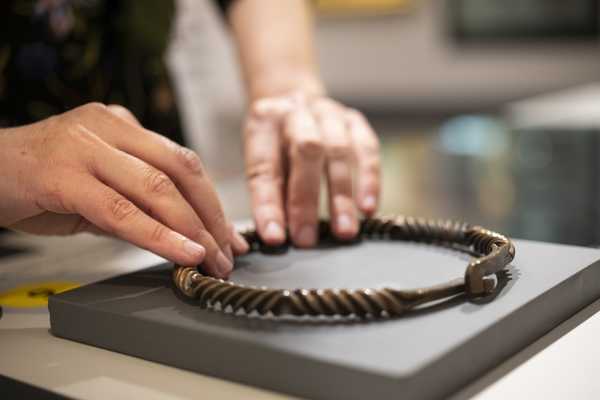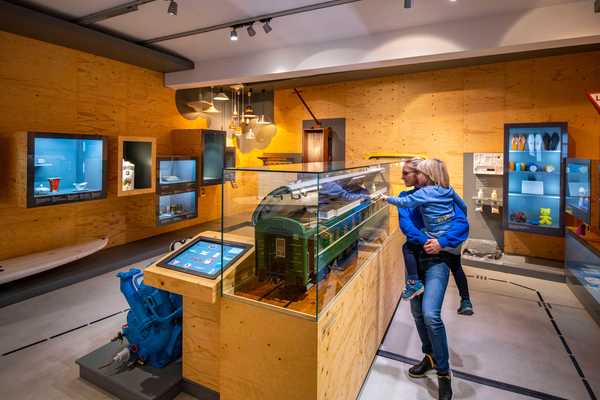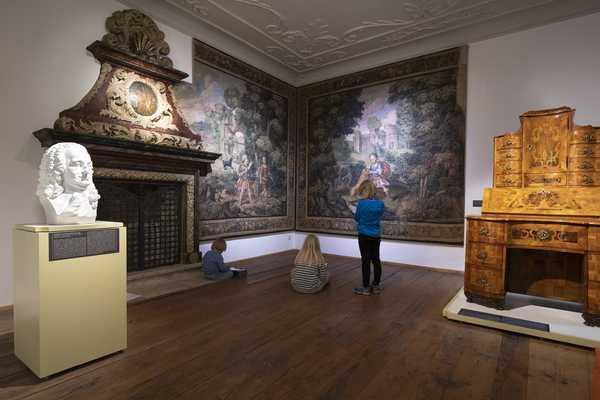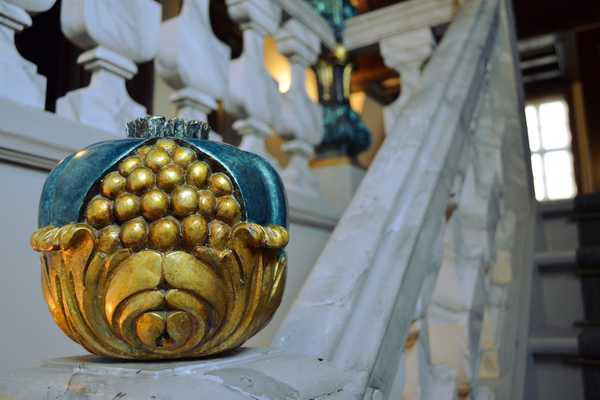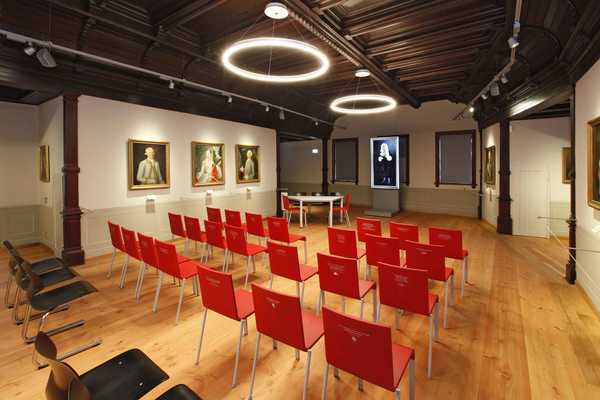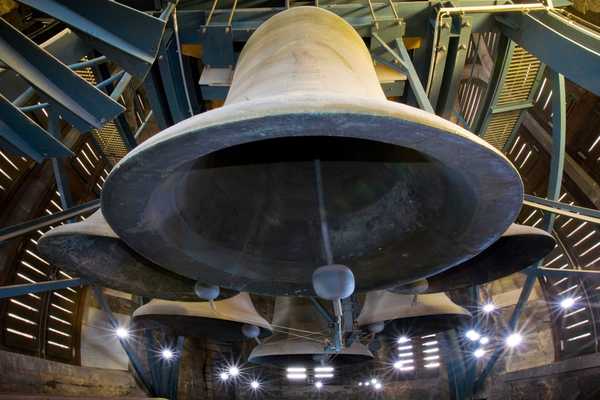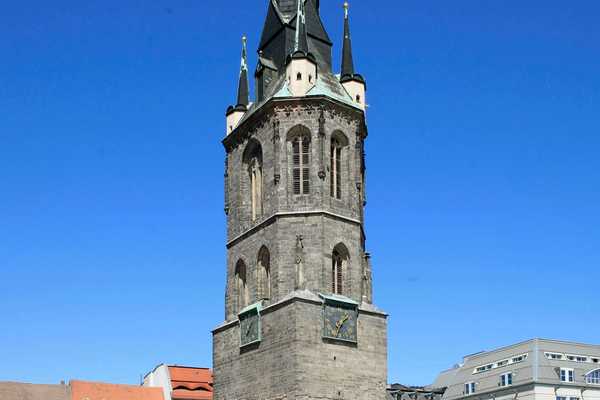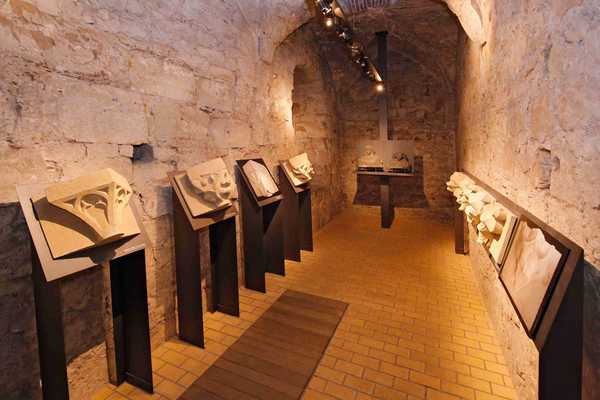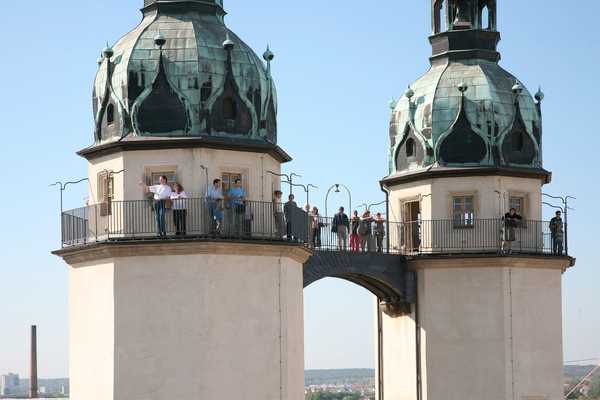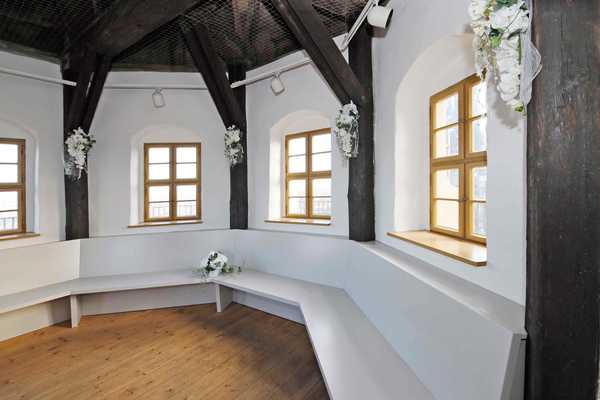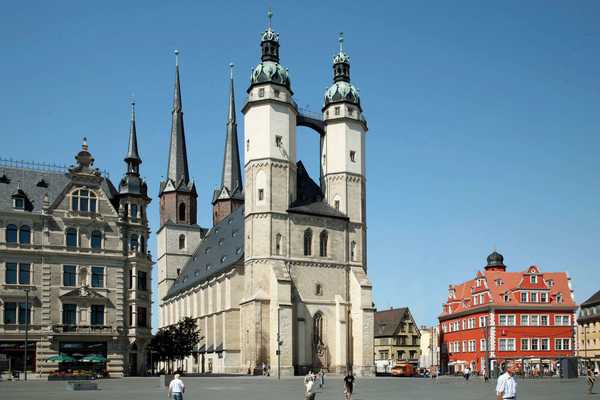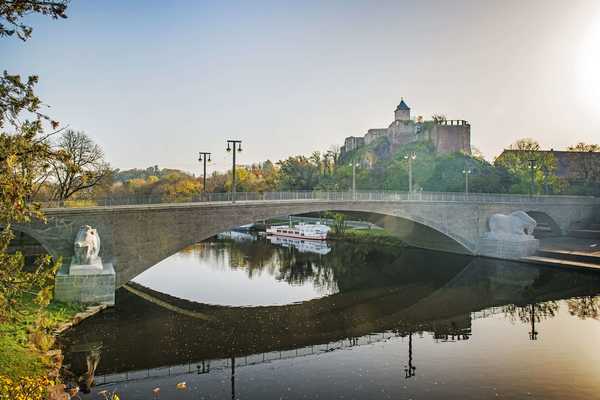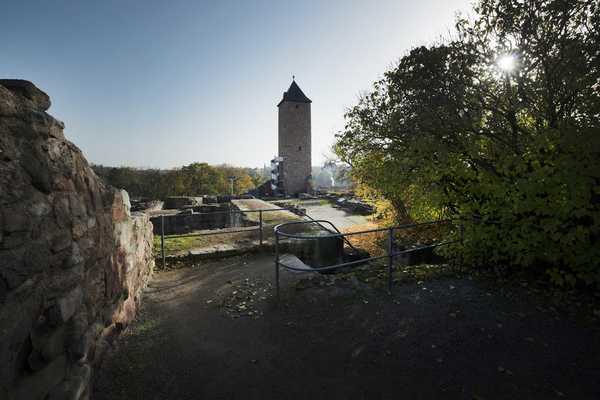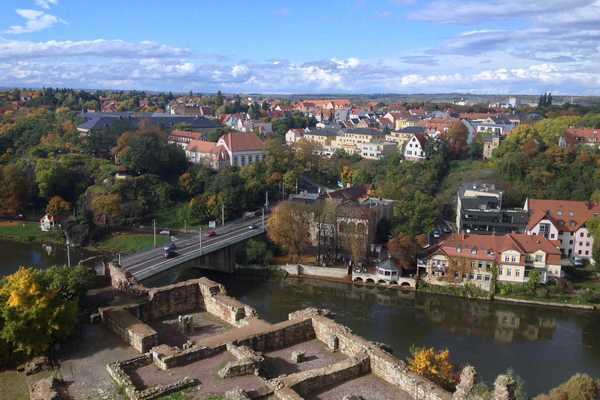Welcome to the City Museum Halle
1200-year history of the city, that is located on the river Saale, revives inside of two permanent exhibitions at the City Museum of Halle: "Discover Halle" and "Sociability and the freedom to philosophize".
The history of the building goes back into its use as a professor’s residential house up until the industrial age. After the death of the landlord, philosopher Christian Wolff (1679-1754), his residential house was turned into a printing and publishing house with its own printing presses. Typing, printing, and stitching were performed here until 1992.
There are three other historical places to visit belonging to the museum: The Red Tower, the "Hausmanntürme" and the Castle of Giebichenstein. For more informations see the end of this page.
Stadtmuseum Halle (Saale)
Discover Halle!
The permanent exhibition “Discover Halle!” is dedicated to the history of the city. Let’s Discover Halle! with a help of its objects: the former export hits “Made in Halle”, objects from all across the globe that found their way into the city on the river Saale, as well as the historically significant items from the personal environment of city’s public figures that shed light on different facets of the urban development.
Children and families discover the world of the museum by the means of the three-dimensional and interactive elements, such as an auditory and olfactory station, special display cases for children and items, you can touch.
Sociability and the freedom to philosophize
The second permanent exhibition is linked to the statement of Christian Wolff, “Sociability and the freedom to philosophize. Halle during the Enlightenment” and loosely dedicated to the social life of the 18th century. Thus, a prominent sleigh, as a contemporary witness, narrates a story about what a bad ending could have the students’ sleigh ride in the winter. Or you can learn about the exciting story hidden behind a lady’s portrait.
Christian Wolff purchased the estate in 1740, right after his triumphant return to Halle. Up until his death, it remained a centre of philosophy and sciences. His audience chamber is decorated with unique linen tapestries, which presents the story of Samson, according to the canons of baroque biblical imagery, thus they testify to the splendour of the bourgeois professorial house.
Finish your journey back into the age of Early Enlightenment inside of Christian Wolff’s former auditorium. Here, the landlord held his scientific lectures to his (at that time only male) students in the German language. In the German language – a novelty at the time!
Combine your visit to the city on the river Saale with a stair climb to the top of the Red Tower (Roter Turm) on the marketplace (Marktplatz). Enjoy the view over the imposing marketplace and marvel at Europe’s biggest tower carillon.
Stair climb is only possible as the part of a guided tour. Guided tours: Monday, Wednesday, Friday at 5 pm, Saturday, Sunday, holidays at 2 pm.
The "Hausmannstürme" are two of four towers of the Market Church. They form the eastern end of the church, directly located on Market Square.
Through the entrance in the north tower and via a connecting room you reach after 226 steps the watchman’s accommodation in the south tower. From here you reach the connecting bridge of the two towers. High up you can enjoy a panoramic view in all directions to far beyond the borders of the city of Halle - the deserved reward for the difficult climb.
Opening hours: Saturday and Sunday 10 am - 3 pm
Guided tours: Monday, Wednesday, Friday 4 pm
The Castle of Giebichenstein ist located directly on the bank of the river Saale near to the "Kröllwitz" Bridge.
History
Giebichenstein is one of the oldest areas of settlement within the city of Halle. Since the early 9th century it has been part of the Frankish Kingdom. The salt production in the Wittekind valley, the strategic position on the cliff at a river crossing, and the close proximity to trade routes made this location ideal for building of a castle. In 961 Holy Roman Emperor Otto I gave the settlement to the St. Mauritius monastery of Magdeburg (Moritzkloster). With the foundation of the archdiocese of Magdeburg in 968 Giebichenstein went into the ownership of the archbishops. The castle was first documented in the 10th century as Castle ‚Giuicansten‘. The name ‚Old Castle‘ has been used for the complex on the grounds of the Amtsgarten since the 17th century. However, there are no visible remains of the ‚Old Castle‘ left today.
The Upper Castle
Research excavations and reconstructions provide evidence that the Upper Castle was built as a representative castle complex in the 12th/13th century. During the second half of the 12th century the main role was increasingly transferred from the ‚Old Castle‘ to the newly constructed castle. The steep ascent to the Upper Castle, the narrow passageway of the gate tower, as well as the existing architecture and fortification on the cliff made outbuildings necessary. This function could well still have fallen to the ‚Old Castle‘. The oldest parts of the Upper Castle are the northern curtain wall, the keep, the great hall, the castle chapel, the cobbled courtyard, and the substructure of the gate tower. The castle complex had been added to during the following two centuries. The excavated remnants of the great hall and keep with columns and fireplaces illustrate the castle’s function as the residence and administrative seat of the archbishops of Magdeburg. Since the late 14th century, it has been their main residence for their role as landlords of Halle. The Upper Castle was also a customs house and mint.
The Lower Giebichenstein Castle has been home to today’s University of Art and Design since 1921. After research excavations the Upper Castle was opened to the public as a museum of architecture in 1966.
-
Flyer Giebichenstein (PDF 0,47 MB) (483.59 KB)

